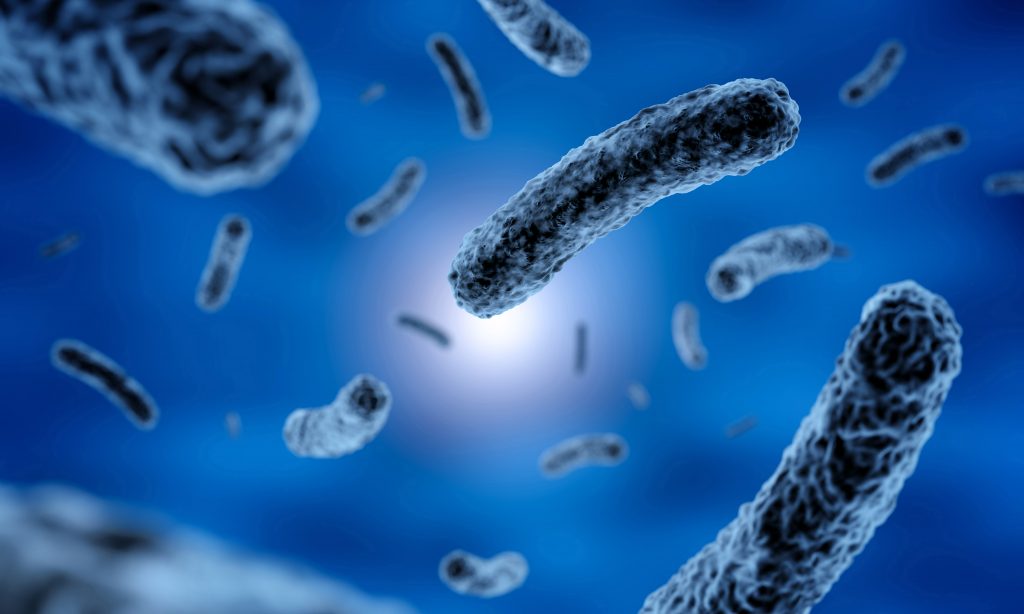10 Apr Dysbiosis, a little known disease with many names and big impact

Intestinal flora comprises all bacteria, protozoa and fungi present in the gastrointestinal tract and consists of approximately 400 to 500 different species. Digestive system is sterile before birth and colonization starts immediately after.
The species living in a given segment of the digestive tract will depend on its environmental conditions (oxygen concentration, feed composition, presence of digestive enzymes and salts, pH…) and are divided in main flora, > 90% of the microbes, comprising predominantly lactic acid-forming bacteria; satellite flora, < 1%, composed by E.coli and enterococci; and residual flora, < 0.01%, which are mainly pathogenic species such as Clostridium, Proteus, staphylococci, or Candida.
Composition of the intestinal microflora is a dynamic equilibrium among the various species and changes with the conditions in the digestive tract. When microflora is balanced, with main flora > 90%, satellite flora < 1% and residual flora < 0.01%, the situation is called “Eubiosis“. Eubiosis is a beneficial status where the host and the microflora live together in symbiosis: the host provides the right environment for the survival of the microorganism and the microorganism contributes to maintain the health of the host.
When the 90%-1%-0.01% balance is disrupted, the condition is called “Dysbiosis or dysbacteriosis”. During dysbiosis there is a dramatic growth of satellite flora and residual flora and the concentration of pathogenic microorganism increases. These pathogens can also produce bacterial toxins that may damage the host.
Dysbiosis produces a non-specific inflammation of the small intestine and disturbances in the integrity of the intestinal wall.
The disease is poorly understood and difficult to study, but it’s widespread and said to affect more than 50% of the farms. It has been given other names such as ‘wet litter’, ‘non-specific bacterial enteritis’, ‘intestinal bacterial overgrowth’, ‘malabsorption’, and many more. If not treated, it leads to more severe enteritis.
COMMON SIGNS
The most known signs are:
- The intestine is inflamed and swollen like a baloon, with small hemorrhages and a thin intestinal wall.
- Foamy and watery intestinal contents.
- Undigested residues of feed are visible in the feces, especially in distal segments of the intestines.
- Wet litter.
- Increase in water intake.
- Decrease in feed intake.
- In many cases, but not all, dysbyosis is linked to decreased feed conversion, decreased body weight, and poor performance in general.
CAUSES
Causes of the disease involve two or more of the following factors:
- Feeding errors and substantial dietary changes (i.e. change from a low protein diet to high protein), low quality feed components and inadequate feed hygiene.
- Poor management or environment.
- Bad hygiene in the farm.
- Subclinical coccidiosis.
- Antibiotic abuse.
- Poor functioning of the glands that secrete HCL in proventriculus, due to mycotoxicosis or other diseases. Gastric acidity in gizzard is the first line of defense against pathogens.
- Stress.
PREVENTION AND TREATMENT
The most effective prevention strategy is to pay attention to digestive health with a holistic approach that includes measures related to feed quality and composition, management, hygiene and biosafety. This multi-departmental plan could include a reduction of the use of antibiotics and their substitution by products based on plant extracts or prebiotics (such as PlusProtect Digestive® or GrowthPlus®) to control pathogenic flora. Also, mycotoxin binders with the special ability to bind trichothecenes should be used to keep proventriculus healthy (PlusBind Bio).
At the onset of the disease, probiotics or prebiotics (PlusBind Bio®, GrowthPlus®) help to restore the balance of microflora. They intervene positively in the colonization of the gut with beneficial micro-organisms. Unlike antibiotics, they do not exert a germicidal action that can reduce the number of useful microbes. Plant extracts can also help to reduce the concentration of pathogenic microorganisms without affecting the beneficial strains.

Certain health statements may not be applicable in your region.

